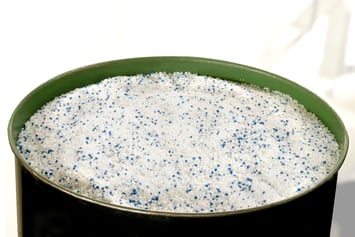Molds are used to make a variety of objects you use every day. And the materials used in replicating these objects come in a wide variety and are selected for each purpose based on flexibility, firmness, durability, and other key properties.
Check out this great list of the most-used materials in mold making and how they’re normally used.
Polycarbonate
Description: An amorphous engineering thermoplastic, polycarbonates are characterized by a combo of toughness, transparency, heat/flame resistance and stability.
Used for: General-purpose molding and used to meet Food and Drug Administration regulations for parts in food-contact and medical applications.
Acetal Copolymer Polyoxymethlene
Characteristics: Lower melting temperatures, which make them easier to process. These have high tensile strength and are flexible with good lubricity.

Acetal Homopolymer Polyoxymethylene
Characteristics: High tensile strength and resilience and tough under repeated impact. Low moisture absorption and excellent against friction and abrasion.
Acrylic
Description: Also known as Lucite, Perspex and Plexiglas, Acrylic – polymethyl methacrylate (PMMA) – is used as a substitute for glass.
Used in: Making motorcycle helmet visors, aquariums, windows on planes, viewing ports for submersibles and exterior lights and lenses for cars. It can also be used in medicine to replace eye glass lenses and in bone cement. Acrylic paint is PMMA particles suspended in water.
Nylon
Description: Nylon belongs to the polyamides class of polymers and is used in manufacturing heat-resistant materials.
Used in: Nylon is often used as a substitute for silk in parachutes, flak vests, women’s stockings, fabrics, rope, carpents and strings for musical instruments. It can also be used for mechanical parts, machine screws and power tool casings.
Polyethylene
Description: Tough and resistant to chemicals, polyethylene comes from a group of materials categorized by density and molecular structure and therefore can have different uses based on those characteristics.
Used for: Based on the molecular weight and density of the polyethylene, it can be used in everything from moving machine parts, bearings, gears, articificial joints, bulletproof vests, margarine tubs, milk jugs, pipes, bottles, sacks and sheets.
Polypropylene
Description: A thermoplastic polymer used in a wide variety of applications.
Used in: Everything from reusable plastic containers, diapers, ropes, carpets, sanitary pads, piping systems, car batteries, electrical cable insulation and filters for gases and liquids. It can also be used as sheets for stationery folders, packaging and storage boxes. In medicine, it is used to repair hernias and make heat-resistant medical equipment.
Polystyrene
Desciption: A synthetic aromatic polymer made from styrene, polystyrene can be solid or foamed.
Used in: Extruded polystyrene is used for disposable cutlery, plastic models of cars, smoke detector housings and disposable cutlery. Expanded polystyrene foam insulates packaging materials (aka: packing peanuts). Extruded polystyrene foam is styrofoam and polystyrene copolymers are used to make toys and product casings.
Polyvinyl chloride (PVC)
Descrpition: A tough, lightweight material resistant to acids and bases.
Used in: The construction industry for vinyl siding, drain pipes, gutters and roofing sheets. When converted to flexible forms with plasticizers, it’s used in everything from hoses to tubing, electrical insulation, coats, jackets and upholstery. Inflatable products like pool toys and water beds are also from flexible PVC.
Teflon
Description: The DuPont Corporation gave the polymer called polytetrafluoroethylene the brand name teflon and it belongs to a class of thermoplastics known as fluoropolymers.
Used in: Coating non-stick cookware, making containers and pipes that need to hold up against reactive chemicals, and is used as a lubricant to reduce wear from friction between sliding parts – gears, bearings, bushings.
Many of the products we use every day come from materials like these used in the mold-making process. For similar topics, be sure to stay tuned to our blog, our online newsletter and our social media platforms.
(SOURCE: Classroom Synonym Thermoplastics)
Modular Molds Contribute to Lean Manufacturing Success
Are you looking for ways to do more with less? Are you pushing the limits of optimization, efficiency and cost effectiveness?


